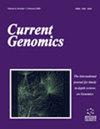三级淋巴结构基因信号预测头颈部鳞状细胞癌的预后和免疫渗透分析
IF 1.4
4区 生物学
Q4 BIOCHEMISTRY & MOLECULAR BIOLOGY
引用次数: 0
摘要
研究目的本研究旨在评估三级淋巴结构(TLS)基因特征对头颈部鳞状细胞癌(HNSCC)预后的影响,并仔细研究三级淋巴结构对免疫浸润的影响。研究方法根据预定的TLS特征阈值,将癌症基因组图谱中的HNSCC患者分为高/低TLS特征组。系统分析了TLS特征与免疫微环境、驱动基因突变状态和肿瘤突变负荷的关联。利用独立数据集(GSE41613 和 GSE102349)进行了验证。结果与TLS特征得分低的患者相比,TLS特征得分高的患者预后更好。与低TLS特征得分组相比,高TLS特征得分组的免疫细胞亚群明显较高。此外,肿瘤免疫微环境中的主要免疫细胞亚群和免疫循环特征与TLS特征呈正相关。在TLS特征高/低组之间观察到了驱动基因的突变差异,主要是在细胞周期和NRF2信号通路中。与TP53野生型患者相比,TP53突变且TLS特征得分高的患者预后更好。在独立队列中,TLS特征与患者预后和免疫浸润之间的关系也得到了证实。此外,免疫相关的生物过程和信号通路随着 TLS 特征的升高而被激活。结论高TLS特征是HNSCC患者一个有希望的独立预后因素。免疫学分析表明,TLS 与 HNSCC 中的免疫细胞浸润存在相关性。这些发现为未来将 TLS 特征应用于 HNSCC 预后和免疫疗法提供了理论依据。本文章由计算机程序翻译,如有差异,请以英文原文为准。
Tertiary Lymphoid Structures Gene Signature Predicts Prognosis and Immune Infiltration Analysis in Head and Neck Squamous Cell Carcinoma
Objectives: This study aims to assess the prognostic implications of gene signature of the tertiary lymphoid structures (TLSs) in head and neck squamous cell carcinoma (HNSCC) and scrutinize the influence of TLS on immune infiltration. Methods: Patients with HNSCC from the Cancer Genome Atlas were categorized into high/low TLS signature groups based on the predetermined TLS signature threshold. The association of the TLS signature with the immune microenvironment, driver gene mutation status, and tumor mutational load was systematically analyzed. Validation was conducted using independent datasets (GSE41613 and GSE102349). Results: Patients with a high TLS signature score exhibited better prognosis compared to those with a low TLS signature score. The group with a high TLS signature score had significantly higher immune cell subpopulations compared to the group with a low TLS signature score. Moreover, the major immune cell subpopulations and immune circulation characteristics in the tumor immune microenvironment were positively correlated with the TLS signature. Mutational differences in driver genes were observed between the TLS signature high/low groups, primarily in the cell cycle and NRF2 signaling pathways. Patients with TP53 mutations and high TLS signature scores demonstrated a better prognosis compared to those with TP53 wild-type. In the independent cohort, the relationship between TLS signatures and patient prognosis and immune infiltration was also confirmed. Additionally, immune-related biological processes and signaling pathways were activated with elevated TLS signature. Conclusion: High TLS signature is a promising independent prognostic factor for HNSCC patients. Immunological analysis indicated a correlation between TLS and immune cell infiltration in HNSCC. These findings provide a theoretical basis for future applications of TLS signature in HNSCC prognosis and immunotherapy.
求助全文
通过发布文献求助,成功后即可免费获取论文全文。
去求助
来源期刊

Current Genomics
生物-生化与分子生物学
CiteScore
5.20
自引率
0.00%
发文量
29
审稿时长
>0 weeks
期刊介绍:
Current Genomics is a peer-reviewed journal that provides essential reading about the latest and most important developments in genome science and related fields of research. Systems biology, systems modeling, machine learning, network inference, bioinformatics, computational biology, epigenetics, single cell genomics, extracellular vesicles, quantitative biology, and synthetic biology for the study of evolution, development, maintenance, aging and that of human health, human diseases, clinical genomics and precision medicine are topics of particular interest. The journal covers plant genomics. The journal will not consider articles dealing with breeding and livestock.
Current Genomics publishes three types of articles including:
i) Research papers from internationally-recognized experts reporting on new and original data generated at the genome scale level. Position papers dealing with new or challenging methodological approaches, whether experimental or mathematical, are greatly welcome in this section.
ii) Authoritative and comprehensive full-length or mini reviews from widely recognized experts, covering the latest developments in genome science and related fields of research such as systems biology, statistics and machine learning, quantitative biology, and precision medicine. Proposals for mini-hot topics (2-3 review papers) and full hot topics (6-8 review papers) guest edited by internationally-recognized experts are welcome in this section. Hot topic proposals should not contain original data and they should contain articles originating from at least 2 different countries.
iii) Opinion papers from internationally recognized experts addressing contemporary questions and issues in the field of genome science and systems biology and basic and clinical research practices.
 求助内容:
求助内容: 应助结果提醒方式:
应助结果提醒方式:


